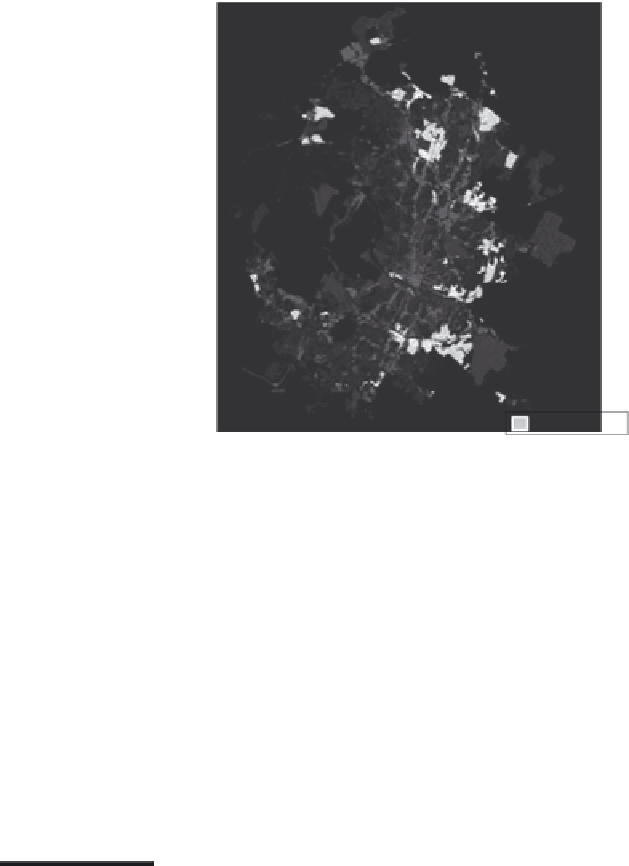Environmental Engineering Reference
In-Depth Information
Austin area land use map
Warehouses
FIGURE 31.2
Map of Austin, Texas, warehouses reveals an opportunity to further advance Austin as a model green city of
the future.
strategic people and organizations. In the development of Austin's Green Building
Program, we enjoyed the support of a progressive mayor and City Council, 42 citizen's
commissions and many environmental groups. Furthermore we established a futuristic,
“maximum potential” model. Its ultimate success was the process itself, that capitalized
on existing checks and balances within Austin's urban system. The program's merits were
recognized at the 1992 UN Earth Summit receiving one of 12 awards for local governmen-
tal environmental initiatives and the only one from the US.
31.3 Lessons Learned
What was learned that could help us understand and work with the even more complex
conditions confronted by the El Paso/Juarez metroplex?
1. The need to identify and put into place a city/regional planning process so that
all actors (i.e., the public, private, and non-profit sectors; citizen commissions; the
mayor and city council) understand their interrelated responsibilities with a sys-
tem for monitoring and measuring.
2. An understanding of four essential flows (information, currency, energy, and
material) and how they organize society and resources in general.
3. Flow intervention must be handled strategically. For example, when capital invest-
ment is not available to support new technologies, the local business sector must

Search WWH ::

Custom Search